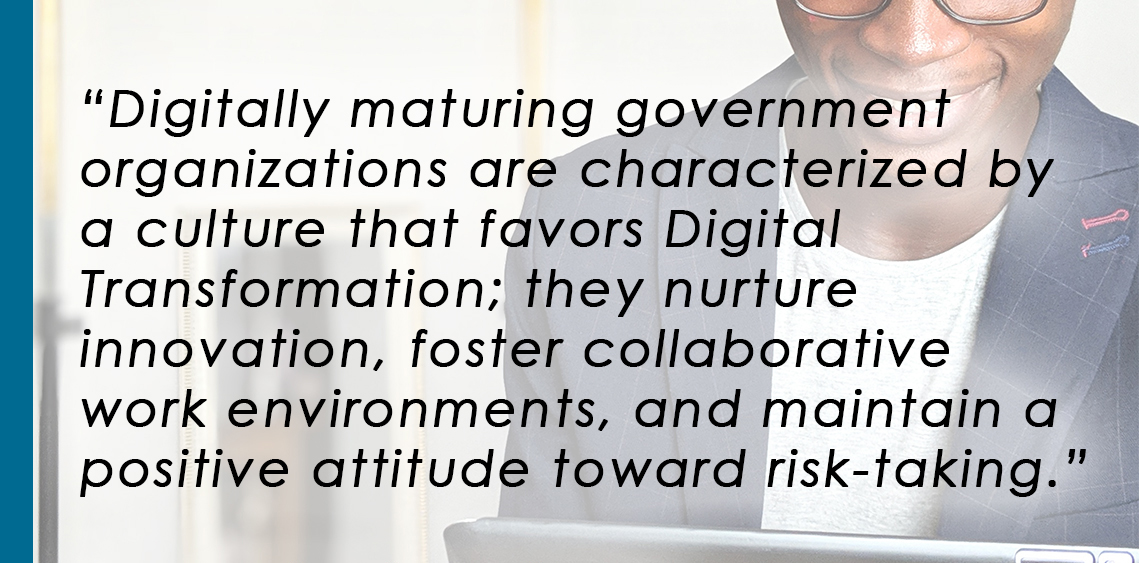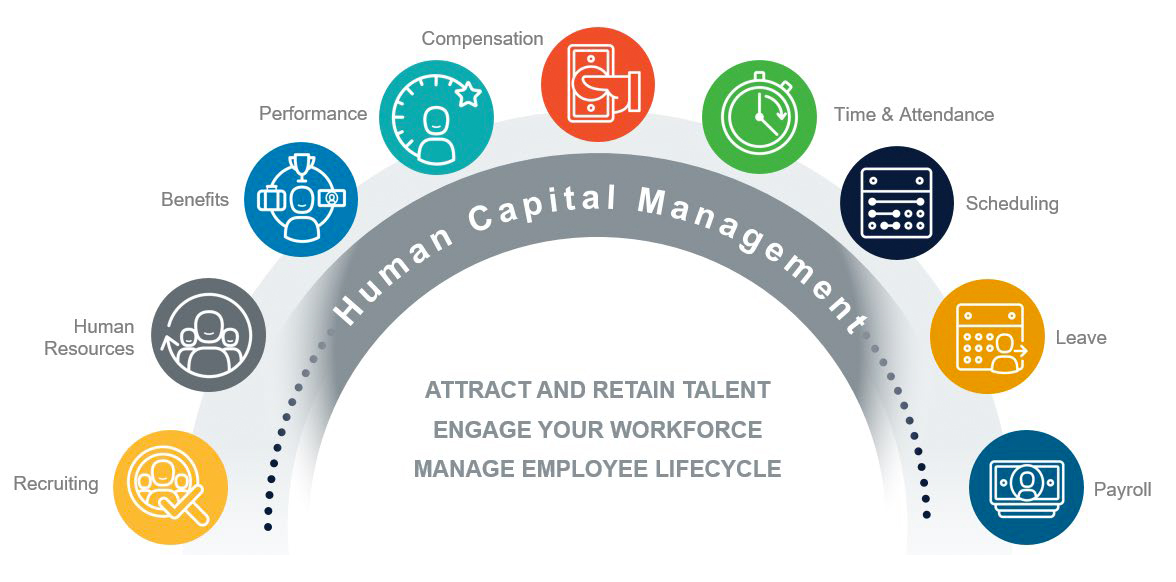Digital Transformation
Going Digital
The term “Digital Transformation” is not new. Whether you’re a CEO, CIO, CHCO or Program Manager, chances are the phrase has been hammered into your head time and again. And though Digital Transformation—the use of emerging digital tools to solve business challenges—may conjure images of cloud computing, AI and software development, at its core, it’s about empowering the WorkForce to work smarter.
Though the need for Digital Transformation is greater than ever, as some industries embrace it head on, others are a bit further behind the curve. Government, for example, has historically been slower to transform, but that’s starting to change as more agencies and organizations begin to embrace the human side of Digital Transformation.
Based on our work with public and private sector clients, Digital Transformation is now a public sector imperative. After all, going digital will enable governments to:
- Better understand their citizens through smart survey and analytics technologies
- Provide services more effectively and efficiently using modern communication tools
- Find new, technology and Human Capital/HR-enabled solutions to policy challenges
- Engage with external partners to develop new service delivery models using
effective cybersecurity solutions, artificial intelligence, data analytics, cloud and other technologies - Improve and commercialize some public services to create fresh sources of revenue
Still, to make Digital Transformation a reality in the slow-to-adopt public sector, Human Capital/HR must step in and lead the critical transition, leveraging technology to shake up the status quo.
Human Capital/HR Must Lead the Path Toward Change
While Digital Transformation initiatives are typically led by the CIO or CTO, the responsibility of execution increasingly falls to Human Capital/HR. But at many public-sector organizations, there’s a lack of accountability around these responsibilities. According to a Global Digital survey, public sector executives expect Human Capital/HR functions to adapt and embrace digital solutions to tackle workforce management challenges, but only 20 percent of HR departments report transformation of processes as a strategic objective and less than 15 percent cite innovation as a strategic objective.

To successfully embrace Digital Transformation, Human Capital/HR departments must prioritize objectives such as digital fluency, skills development and adoption of new technology. For example, if you’ve invested in a digital learning and upskilling solution that delivers content to employees as they need it, they’ll be better suited to serve citizens as well. As a front-end employee at a government agency, there’s nothing more challenging than dealing with a frustrated citizen and not knowing how to use the technology needed to solve their problem. On-demand access to digital learning tools can prevent such situations, offering online training and reskilling courses as workers need them.
And finally, digital solutions for government can also provide employees with a direct line to citizens, giving them better insight into what their needs and expectations are. Crowdsourcing progressive and innovative ideas through focus groups, competitions, hackathons, user-centered design and co-creation are just a few ways to get citizens involved in how their leaders govern, and many of these initiatives would be impossible without digital technologies and apps.
Digital Transformation Will Require Organizational Revolution
A successful Digital Transformation doesn’t just require a shift in technology; it also demands a full overhaul of the way people think about the technology they use and the potential impact it could have. The challenge, of course, is that many Digital Transformation initiatives fail before they even have an opportunity to succeed. That’s because a majority of public sector organizations grapple with the cultural elements of Digital Transformation: more than 85 percent of agencies cite culture as a challenging aspect of managing the transition. This means that before your organization can embrace Digital Transformation, you need to introduce practical and realistic Cultural Transformation. Successful innovation calls for changing organizational structures, business processes, overall attitudes about work and how to successfully adopt technology. Exercising an openness to change is the first step to any successful transformation. Executive buy-in is an integral part of the process—creating a culture of trust and transparency begins at the top and flows down; Human Capital/HR must have tough conversations with their C-suite partners about the importance of designing, deploying and adopting enabling technologies to foster new workforce paradigms.





